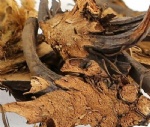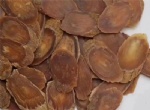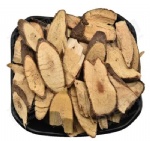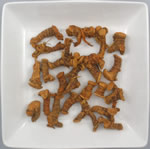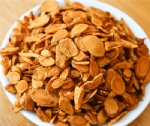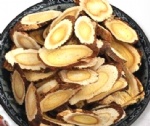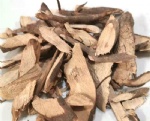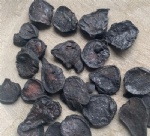
|
KWOK SHING HONG |
|
|||
Products CategoryContact Us
Add: China |
RHIZOMA CORYDALISProduct name : RHIZOMA CORYDALIS Item : 79351486069 Details :Yuanhu is also called Yanhusuo, and Yanhusuo was originally named Xuanhusuo. Because of avoiding Song Zhenzong's taboo, "Xuanhusuo" was changed to "Yanhusuo". Corydalis yanhusuo (Corydalis yanhusuo (Y. H. Chou & C. C. Hsu) W. T. Wang ex Z. Y. Su & C. Y. Wu) is a traditional Chinese medicine commonly used in clinical practice. It is a perennial herbaceous plant of the genus Corydalis in the family Papaveraceae; the tuber is spherical; the stem is erect, often branched, with scales above the base, the cauline leaves, the scales and the lower cauline leaves often have axillary tubers; the leaf lobes are lanceolate, and the lower leaves are long Stems and small petioles; corolla purplish red, growing horizontally on relatively thin small pedicels, outer petals are broad; fruit is linear capsule; flowering period is March-April. Yanhusuo is distributed in Zhejiang, Jiangsu, Anhui, Hubei, Henan, and other places in China. Efficacy and function are mainly for promoting blood circulation, promoting qi, relieving pain, and sedating. It is more commonly used for various pains, such as sore throat and headache after a cold, and angry flank pain, stomach pain, dysmenorrhea, and various arthritis. Such as rheumatoid arthritis, rheumatoid arthritis, osteoarthritis, etc., these pains can be applied. Yanhusuo, also known as "Maoshan Xuanhusuo", first appeared in Li Zhongli's "The Original Materia Medica" in the Qing Dynasty. According to records, since the Ming Dynasty, the origin of Yanhusuo has gone south, and "Maoshan Yanhusuo" and "Xiyanhusuo" are known to the world. "Maoshan Xuanhusuo has greenish-yellow skin, yellow flesh, small and firm shape, and this product is the best. "Today's Shanglongdong on Maoshan Mountain, Renhe (now Hangzhou) Jianqiao is also planted." "Xixuanhusuo is large and black-skinned. Meat yellow, this kind of strength is slightly", obviously it is the potato root Corydalis and long-distance Corydalis and its adjacent species produced in Xinjiang. Corydalis before the Song and Tang Dynasties was produced in Northeast China and North China (see the article of Corydalis corydalis), and the production area went south. It was replaced by "Maoshan Xuan Hu Suo" and moved westward to be replaced by "Xi Xuan Hu Suo". It was actually formed naturally after the Southern Song Dynasty moved south and the northern commercial roads were blocked. People today know that Yan Hu Su is produced in the south. I didn't know that the ancient Yanhusuo was produced in the north, but I regarded it as a substitute. The ancient Chinese believed that Corydalis Corydalis Vinegar can enhance Qi circulation and relieve pain, and it can also soften blood vessels. Modern pharmacological research also believes that Corydalis Corydalis can exert a stronger effect in an acidic environment. The history of Corydalis Corydalis is recorded in "Kaibao Materia Medica". It is warm in nature and bitter in taste. It is a wonderful product for promoting blood circulation, removing blood stasis, promoting qi and relieving pain, and is especially famous for its pain-relieving effect. Li Shizhen summarized in "Compendium of Materia Medica" that Corydalis Corydalis has four major functions of "promoting blood circulation, benefiting Qi, relieving pain, and urinating". Yanhusuo is also one of the famous "Eight Flavors of Zhejiang". Studies have shown that Corydalis can inhibit the secretion of gastric juice, so it can also be used clinically for patients with hyperacidity, and the effect is also good. Doctors can use it according to the patient's condition. Individuals should not use it without authorization, because traditional Chinese medicine has certain side effects, so it is safer to consult a professional physician or pharmacist before using it. Barcode: 79351486069 Ingredients: Yuan Hu Specifications: 16oz (454g) Efficacy: It is used for the pain of qi stagnation and blood stasis in various parts of the body, dysmenorrhea, amenorrhea, lump in the abdomen, postpartum stasis, injury from falls, and pain caused by hernia. Send Inquiry : |
Home
|
About Us
|
Products
|
News
|
Feedback
|
Contact Us
|
SiteMap
Copyright © 2025 KWOK SHING HONG All Rights Reserved
Copyright © 2025 KWOK SHING HONG All Rights Reserved






 KWOK SHING HONG
KWOK SHING HONG  ROOTS
ROOTS 
